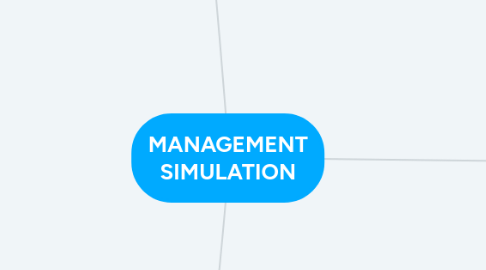
1. UNIT 1: strategic analysis
1.1. 1. The strategic management process: Strategic Analysis (Albizu, E. & Villareal, O. (2013))
1.1.1. The strategic analysis represents the surveillance system, internal diagnosis or evaluation of the situation of the resources and capacities that define the essential competencies of the organization.
1.1.2. Determines the characteristics of the environment the company faces, also its own capabilities and abilities
1.1.3. The strategic analysis let us know the competitive position of the company
1.1.3.1. Internal analysis
1.1.3.2. External analysis
1.1.4. It is important to recognize and analyze the environment that surrounds the company
1.2. 2. Strategy in Practice: The Professional Guide to Strategic Thinking (Tovstiga, G. (2012)).
1.2.1. It has three purposes
1.2.1.1. 1. Helps break down strategic questions and associated problems into their component parts
1.2.1.2. 2. Helps identify triggers that suggest the strategic question
1.2.1.3. 3. Forms the basis for the formation of parts and fragments of discernment
1.2.2. It is based on a multidisciplinary combination of rigorous and informal scientific processes that are used to correlate, identify and evaluate performance
1.2.3. Opportunity - Response analysis
1.2.3.1. It has two curves:
1.2.3.1.1. One is defined by a decreasing function and represents the market opportunity
1.2.3.1.2. The other curve is defined by an increasing function and represents the firm's response to that market opportunity
1.2.3.1.3. The competitive position of the company is determined by its knowledge, which is why it is sometimes known as the "knowledge curve"
1.2.3.2. The FODA analysis could be useful
1.3. Organizational strategic management: practical guide for business diagnosis. (Prieto, H. (2009))
1.3.1. It is a process that allows to establish the strengths and weaknesses, the restrictive forces, the dynamics of change, the operational system and the health of an organization. (Prieto. 2002)
1.3.2. The steps to establish it are;
1.3.2.1. Preparation
1.3.2.2. Analysis
1.3.2.3. Definition of the situation or need
1.3.2.4. Action plan
1.3.2.5. Drafting of the diagnostic report
2. UNIT 2: Business marketing
2.1. Marketing Plan. (Céspedes, S. (2010))
2.1.1. Marketing is framed within three major contexts: society, economy and business, and as a central point of this, are the people and the reason for being of any activity.
2.1.2. The economic system is the articulation of the means of production through the policies of a state for the satisfaction and demand of people's goods and services
2.1.3. Basic Marketing Factors
2.1.3.1. product
2.1.3.2. price
2.1.3.3. communication
2.1.3.4. distribution
2.1.3.5. packing
2.1.3.6. power
2.1.3.7. public relations
2.1.3.8. market intelligence
2.1.3.9. after-sales service
2.1.3.10. brand
2.1.3.11. Logistics
2.1.3.12. innovation
2.1.4. The functions that are executed within a marketing system are concentration, leveling or adjustments and dispersion.
2.2. Price fixing (Céspedes, S. (2010))
2.2.1. The price of a product is the amount that the buyer pays the seller in order to obtain a product
2.2.2. The profits of a company are determined by income and expenses
2.2.3. Within cost-oriented pricing, we find profit margin prices and target prices
2.2.4. Within demand-oriented pricing, we find pricing using perceived value and pricing for differential demand
2.2.5. Among the determining factors of the price we find:
2.2.5.1. Normal demand
2.2.5.2. Reverse demand
2.2.5.3. Production capacity
2.2.5.4. Payment methods
2.2.5.5. Quality and price
2.2.5.6. Competition
2.2.5.7. Characteristics of the potential consumer
2.2.5.8. Substitute products
2.2.5.9. Monopoly Products
2.2.5.10. Targeted pricing
2.2.5.11. Market quotes
2.2.5.12. Price levels
2.3. Successful sales management: methods, secrets and strategies to lead sales teams towards success. (Salterain, F. (2011) )
2.3.1. Profile and main tasks of a sales manager
2.3.1.1. Good oral communicators
2.3.1.2. Good written communication
2.3.1.3. Good listening
2.3.1.4. Organized
2.3.1.5. Persuasive
2.3.1.6. Counselors and mediators
2.3.1.7. They have the ability to choose the people around them
2.3.1.8. Creative
2.3.1.9. Service attitude
2.3.2. Tasks to be performed by a sales manager
2.3.2.1. Sales planning and budget
2.3.2.2. Recruitment, selection and initial training of salespeople
2.3.2.3. Sell ideas to your team
2.3.2.4. Generate opportunities for your sellers
2.3.2.5. Get involved in marketing decisions Monitoring, evaluation and control
2.3.2.6. Conflict management
2.3.2.7. Manage sales management
2.3.2.8. Compensation, motivation and direction of the sales force
2.3.2.9. Development and training of your sales force
3. UNIT 3: business strategies
3.1. Types of business strategies (Cipriano, L. (2014))
3.1.1. The strategy arises from actions planned in order to generate a solution
3.1.2. Corporate strategies
3.1.2.1. Create measures to establish positions in different businesses and achieve their diversification
3.1.2.2. Initiate actions to improve business performance
3.1.2.3. Find a way to capture all the strategic combinations and turn them into a competitive advantage
3.1.2.4. Set investment priorities and guide resources to the most attractive resource units
3.1.3. The business unit strategy is the action plan formulated by management for a single business. It consists of:
3.1.3.1. Develop a response to changes if they are carried out in the business environment such as the economy in general
3.1.3.2. Devise and create competitive measures and market approaches that seek a stable competitive advantage
3.1.3.3. Devise and create valuable skills and potential
3.1.3.4. Achieve synergy in the strategic initiatives of the functional areas
3.1.3.5. Solve the strategic problems that the business of the company faces
3.2. The strategy in brief. Tarziján, M. (2013)
3.2.1. The strategy is associated with the choice of certain paths of action to move from the current situation to the desired future situation
3.2.2. Choice and trade-off are two of the most important concepts in the study of business strategy
3.2.3. One of the most important choices of a company is the value proposition
3.2.3.1. The concept of value proposition is associated with that of positioning, and includes the definition of the type of consumers to be served, of the needs to be satisfied, and also of the relative price at which you wish to serve those customers and their needs.
3.2.4. The company must have the resources and capabilities that are required to deliver a successful value proposition.

